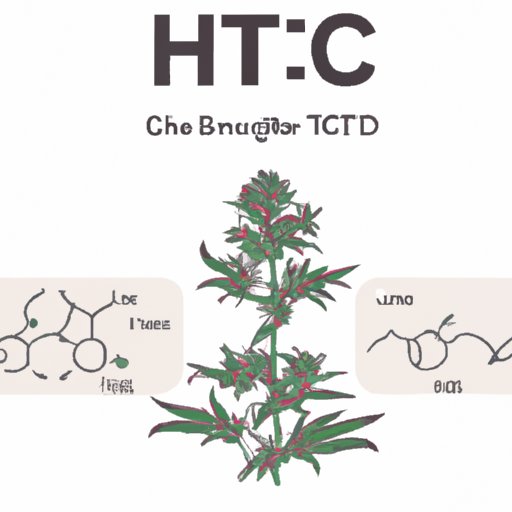Introduction
Tetrahydrocannabinol (THC) is the main psychoactive component of cannabis. It is primarily responsible for the euphoric and intoxicating effects associated with marijuana use. But how does THC work in the body? This article will explore the pharmacology and potential therapeutic benefits of THC.
Effects of THC on the Brain and Central Nervous System
THC binds to cannabinoid receptors in the brain, which are part of the endocannabinoid system. The endocannabinoid system is made up of naturally occurring cannabinoids that interact with the brain and central nervous system. When THC binds to these receptors, it can cause a variety of effects, including changes in mood, appetite, and perception.
When THC enters the bloodstream, it is quickly metabolized by the liver into metabolites. These metabolites then bind to cannabinoid receptors in the brain, resulting in the psychoactive effects associated with cannabis use. In addition, these metabolites can also bind to other receptors in the body, such as those in the immune system, and can result in anti-inflammatory and neuroprotective effects.
Pharmacokinetics of THC
The pharmacokinetics of THC is complex and not fully understood. THC is lipophilic, meaning it is readily absorbed by fatty tissues such as the brain and fat cells. It is quickly metabolized by the liver and has a half-life of approximately 24 hours. The metabolites of THC can remain in the body for up to 30 days after ingestion.

Potential Therapeutic Benefits of THC
Despite its intoxicating effects, THC has been found to have potential therapeutic benefits. Studies have shown that it can be an effective analgesic, or pain reliever, due to its interaction with the endocannabinoid system. It has also been found to have anti-inflammatory and neuroprotective properties, which could be beneficial for treating certain conditions.
In addition, THC has been found to be useful in treating nausea and vomiting associated with chemotherapy. It has also been found to be beneficial in treating glaucoma, as it can lower intraocular pressure in the eye. Finally, it has been studied as a possible treatment for anxiety and depression, although more research is needed to determine its efficacy.
Conclusion
THC is the main psychoactive component of cannabis and is responsible for its intoxicating effects. It binds to cannabinoid receptors in the brain and is quickly metabolized by the liver. Despite its intoxicating effects, THC has been found to have potential therapeutic benefits, such as being an effective analgesic and having anti-inflammatory and neuroprotective properties.
In conclusion, THC works in the body by binding to cannabinoid receptors in the brain and is quickly metabolized by the liver. It has the potential to provide therapeutic benefits, such as pain relief, anti-inflammatory effects, and neuroprotection.
(Note: Is this article not meeting your expectations? Do you have knowledge or insights to share? Unlock new opportunities and expand your reach by joining our authors team. Click Registration to join us and share your expertise with our readers.)
